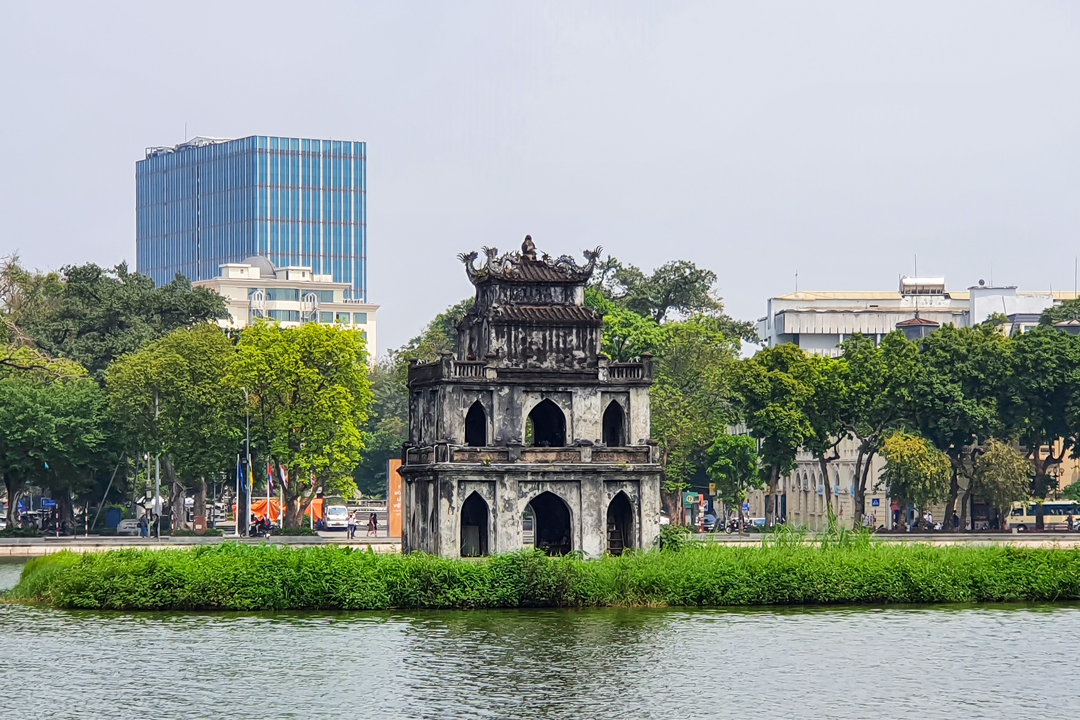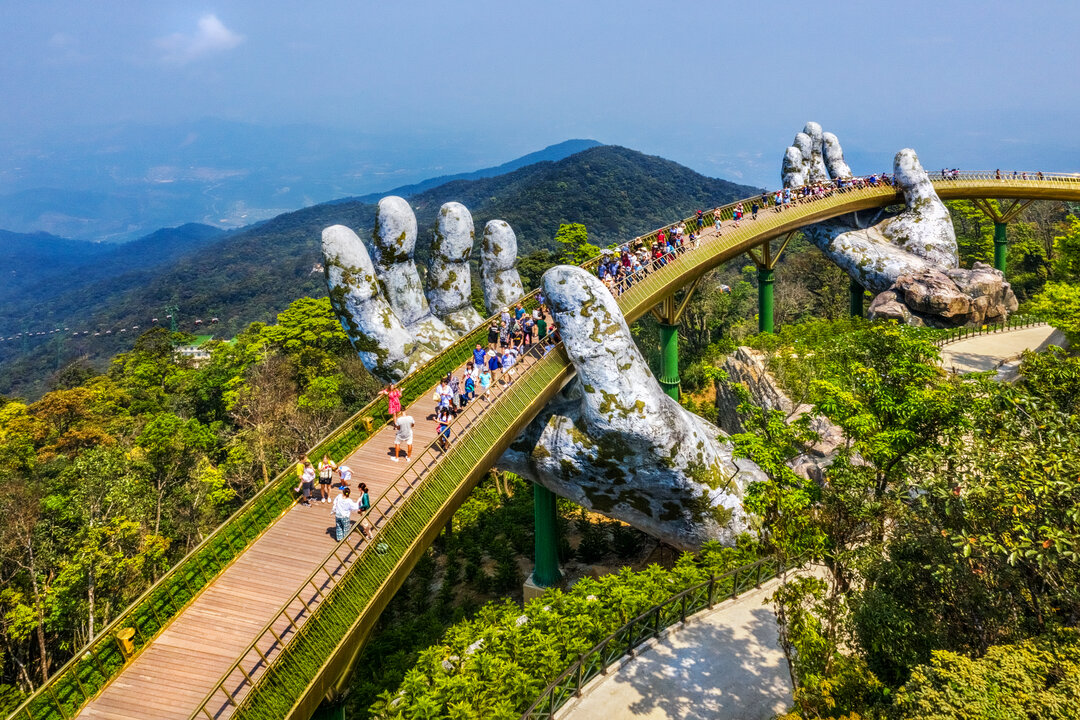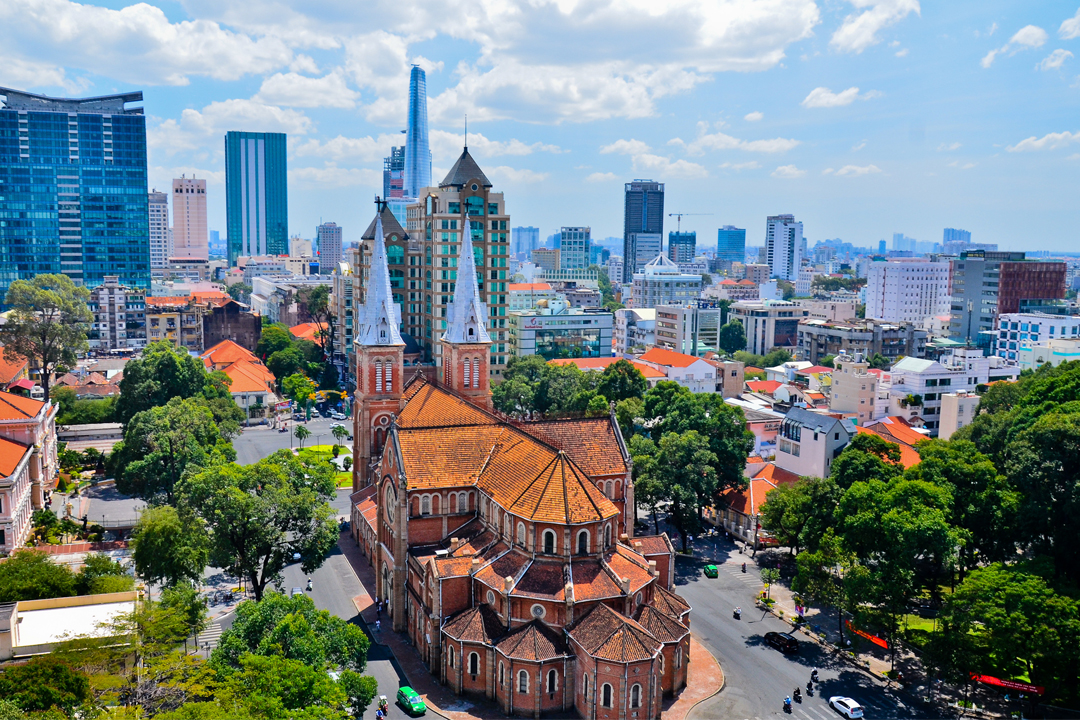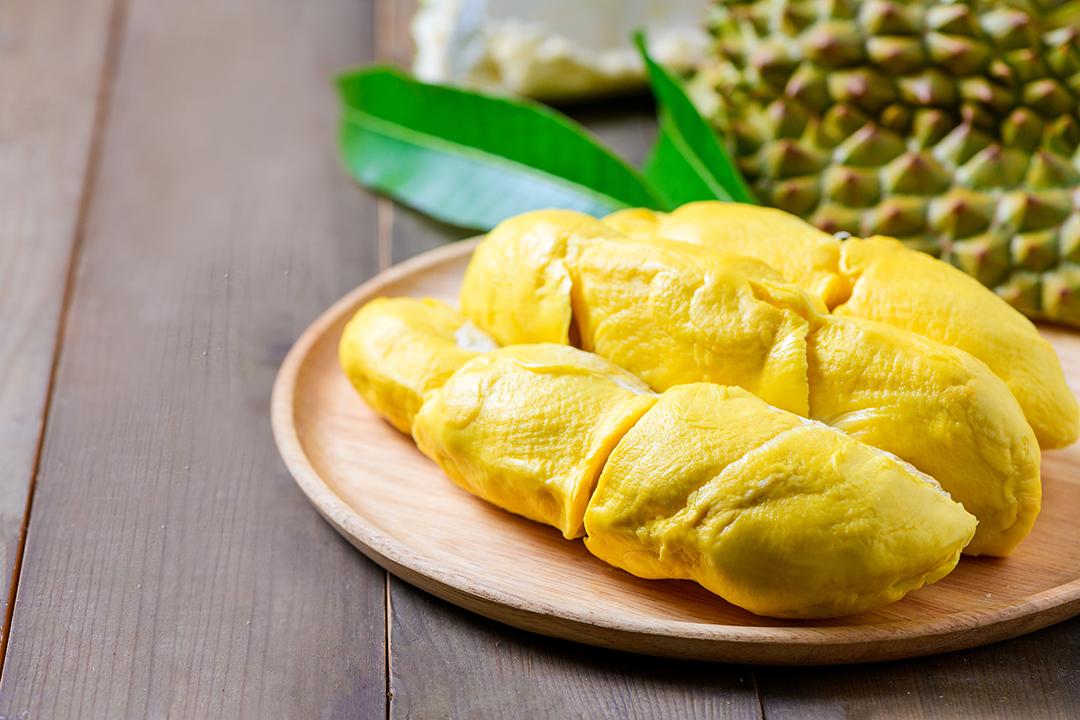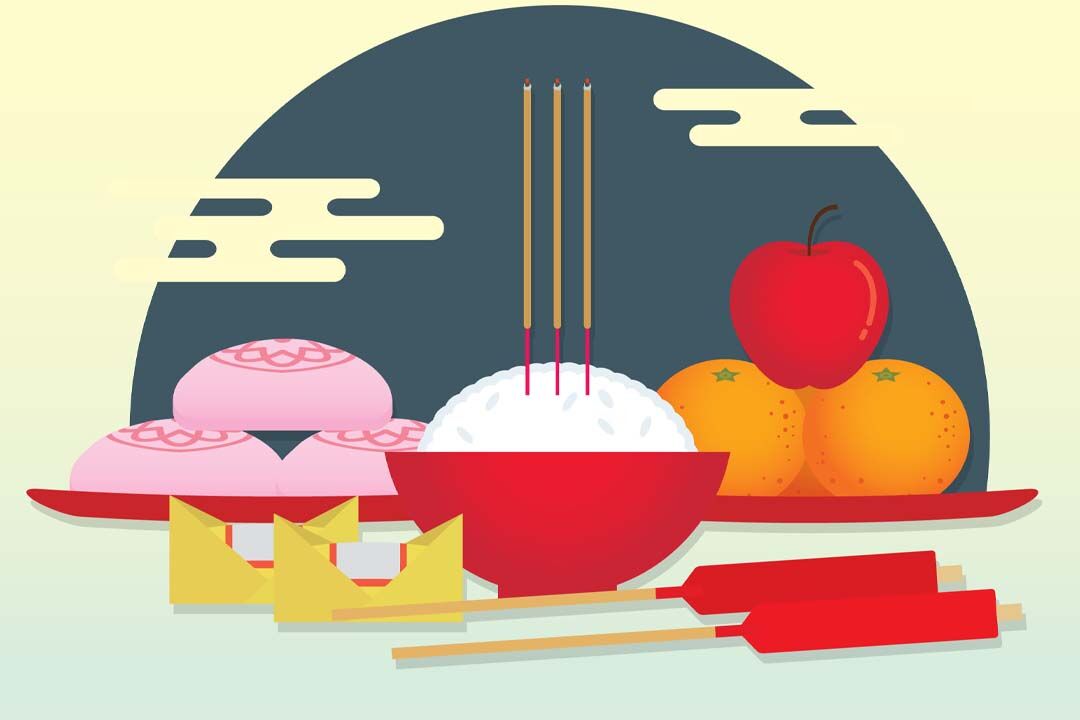Aug - 21 - 2025
With its striking vermilion hue over the emerald waters of Hoan Kiem Lake, The Huc Bridge stands as a cherished symbol of Hanoi’s history, culture, and spirit. This graceful wooden arch leads visitors from the bustling city to the sacred Ngoc Son Temple, a journey that has inspired poets, photographers, and travelers for over 150 years. In this guide by GTrip, you’ll uncover the bridge’s rich history and the best ways to experience the bridge.
Where is The Huc Bridge?
Location: Hoan Kiem Lake, Hanoi
Often called the "Red Bridge", The Huc Bridge's striking color makes it instantly recognizable against the tranquil green backdrop of Hoan Kiem Lake. It stands as a proud centerpiece in the city's cultural and historical heart, connecting the bustling lakeshore with the serene Jade Island, home to Ngoc Son Temple. Its location makes it one of the most central and accessible of the top attractions in Hanoi. At night, the bridge is illuminated with bright lights, creating a spectacular reflection on the lake's surface that attracts visitors and creates a truly magical sight. The Huc Bridge is a highlight of any trip to the capital. For a perfectly planned visit, check out GTrip's guide to the best things to do in Hanoi.

The Huc Bridge, with its vivid red hue and iconic lakeside setting, is a must-see symbol of Hanoi’s cultural and historical heart
How to get to The Huc Bridge?
Positioned in the very center of Hanoi, reaching The Huc Bridge is straightforward. Its proximity to the Hanoi Old Quarter makes it a pleasant destination on foot, allowing you to soak in the city's vibrant atmosphere along the way. For those coming from further afield, several convenient options are available.
- By bus: This is an economical and popular way to experience Hanoi like a local. Several public bus routes pass near Hoan Kiem Lake, including numbers 02, 04, 08, 14, 31, 36, and 42. You can use the BusMap Ha Noi app to find the best route and stop, which is typically just a short walk from the bridge.
- By ride-hailing app: Services like Grab are widely available, convenient, and affordable in Hanoi. You can book either a car or a motorbike taxi to take you directly to the entrance of the Hoan Kiem Lake area.
- By motorbike/on foot: If you are staying in or around the Hanoi Old Quarter, the easiest way to get to The Huc Bridge is to simply walk. The journey is short and scenic. Renting a motorbike is also a popular option for independent travelers, though be aware that parking near the lake can be limited.
History of The Huc Bridge
The The Huc Bridge is a red wooden bridge connecting the shore of Hoan Kiem Lake to a small island with the Ngoc Son Temple in Hanoi. The bridge was built in 1865 during the reign of King Tu Duc by the scholar Nguyen Van Sieu, a great cultural figure of Hanoi. The name "The Huc" means "a drop of sunlight stays" or "concentrated brilliance."
The bridge consists of 15 spans with 32 round wooden pillars arranged in 16 pairs, the deck is laid with wooden planks, and the railings are painted dark red with the characters "The Huc" gilded in gold. The bridge has undergone two major restorations. The first was in 1865 during the reign of King Thanh Thai. The second was in 1952, when one span broke due to too many people crossing to visit Ngoc Son Temple on the New Year's Eve of the Year of the Dragon. The later repair was supervised by architect Nguyen Ba Lang, the bridge’s surface and railings remained wooden, but the foundation was recast in cement for durability.
The bridge is designed with a curved shape like a rainbow, its pointed pillars reminiscent of the historic victory of Ngo Quyen on the Bach Dang River. The bridge faces east, welcoming the sunlight, with the red color symbolizing life and happiness. The Huc Bridge is a prominent architectural structure and a special cultural and historical symbol associated with Hoan Kiem Lake and Ngoc Son Temple.
The rich history of the bridge is intertwined with the city's past. Discover more stories with our cultural walking tour in Hanoi.

The Huc Bridge, a graceful red wooden span built in 1865, links Hoan Kiem Lake’s shore to Ngoc Son Temple, symbolizing Hanoi’s history, culture, and enduring spirit
What to do when visiting The Huc Bridge?
A visit to The Huc Bridge offers more than just a walk across a lake, it's an immersive experience into Hanoi's culture and scenic beauty.
Admire the architecture of the bridge
The bridge’s brilliant red, symbolizing luck and happiness, glows warmly against the cool emerald waters of Sword Lake. The bridge's design is a classic example of traditional Vietnamese architecture, crafted to exist in perfect harmony with its natural surroundings. Its graceful curve is often compared to a rainbow or a silk ribbon. From the bridge, you can admire the picturesque scenery of the lake, including a perfect Turtle Tower view and the ornate entrance to Ngoc Son Temple. It creates a landscape that feels like a living watercolour painting.
Take lots of photos with the bridge
The Huc Bridge is undeniably one of the most Instagrammable places in Hanoi, offering countless angles for stunning pictures. For the best photo spots, consider capturing the bridge's reflection on the water's surface. Early morning provides soft, gentle light, while evening offers a dramatic view when the bridge is illuminated, its red glow creating a magical atmosphere. Frame your shots to include the Turtle Tower in the distance or the intricate gate of Ngoc Son Temple as you approach. The vibrant red structure provides a beautiful contrast, making it a favorite subject for Hanoi photography.

The Huc Bridge, with its vivid red hue and scenic lake setting, is one of Hanoi’s most photogenic landmarks, perfect for capturing stunning shots any time of day
Visit other famous attractions near The Huc Bridge
The bridge serves as a fantastic starting point for exploring the many historical and cultural attractions near Hoan Kiem Lake.
1. Turtle Tower
Turtle Tower, standing on a small islet in Hoan Kiem Lake, is one of Hanoi’s most iconic symbols. Built in 1886, it commemorates the legend of Emperor Le Loi returning a magical sword to the sacred Golden Turtle. With its blend of Vietnamese and French architecture, the tower remains a timeless emblem of the capital’s history and culture. Today, it is not only a historic landmark but also a picturesque centerpiece that draws countless visitors to the heart of Hanoi.
2. Ngoc Son Temple
At the end of The Huc Bridge lies its destination: Ngoc Son Temple (Temple of the Jade Mountain). This revered temple is a functioning place of worship and a monument of immense historical importance. Its construction began in the 19th century and it is dedicated to several significant figures. Most notable are the 13th-century military commander Tran Hung Dao, who repelled Mongol invasions, and Van Xuong De Quan, the Taoist deity of literature and scholarship. Inside are statues, ornate altars, and a preserved giant turtle, tying the temple to the legends of Hoan Kiem.
3. Pen Tower - Ink Slab Tower
Before you even step onto The Huc Bridge, you pass through a magnificent gate complex that includes the Pen Tower (Thap But) and the Ink Slab (Dai Nghien). This impressive stone structure was also the creation of the scholar Nguyen Van Sieu in 1865. The Pen Tower is a tall, slender obelisk topped with a stone paintbrush tip. On its side are three characters that translate to "Write on the blue sky", a powerful symbol of the nation's literary and scholarly traditions. Just beyond it is the Ink Slab, a large, hollowed stone block carried on the backs of three stone frogs. This complex serves as a profound tribute to Confucianism and the importance of knowledge.
4. Thang Long Water Puppet Theater
Located just across Dinh Tien Hoang Street from the lake, the Thang Long Water Puppet Theater offers one of Vietnam's most unique and delightful cultural experiences. Water puppetry is a traditional art form that originated in the villages of the Red River Delta centuries ago. The stage is a pool of water, from which colorful wooden puppets, controlled by puppeteers hidden behind a screen, emerge to tell their stories. Performances portray rural life, legends, and folktales, accompanied by a live traditional orchestra. It is an enchanting show for all ages and a wonderful way to connect with Vietnamese heritage.
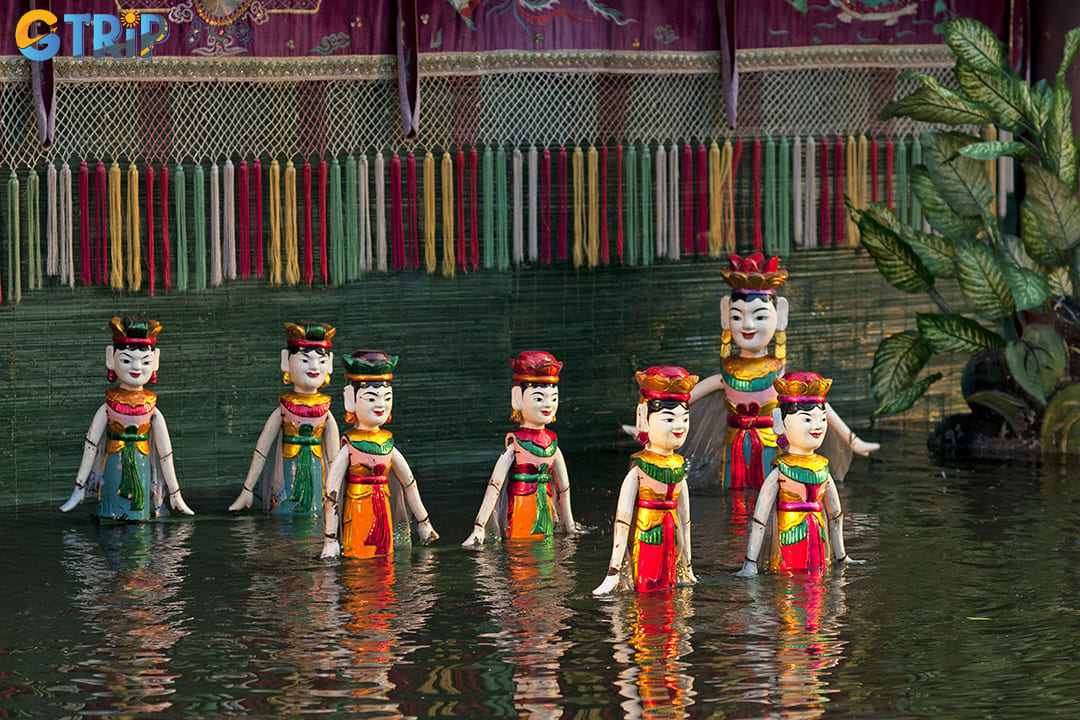
The Thang Long Water Puppet Theater offers a captivating glimpse into Vietnam’s heritage through colorful puppet performances on water, set to live traditional music
Read more: Plan Your Perfect Hanoi Itinerary
The Huc Bridge is more than a photogenic landmark, it is the heartbeat of Hanoi’s cultural and historical soul. With its poetic name, “Where Light Gathers”, and brilliant red hue symbolizing warmth and luck, the bridge embodies the spirit of the capital. Beyond serving as the pathway to Ngoc Son Temple, it carries the legends of Hoan Kiem Lake and the scholarly spirit of the Pen Tower. Every step across its wooden planks feels like a journey back in time - an experience GTrip believes you’ll never forget.

